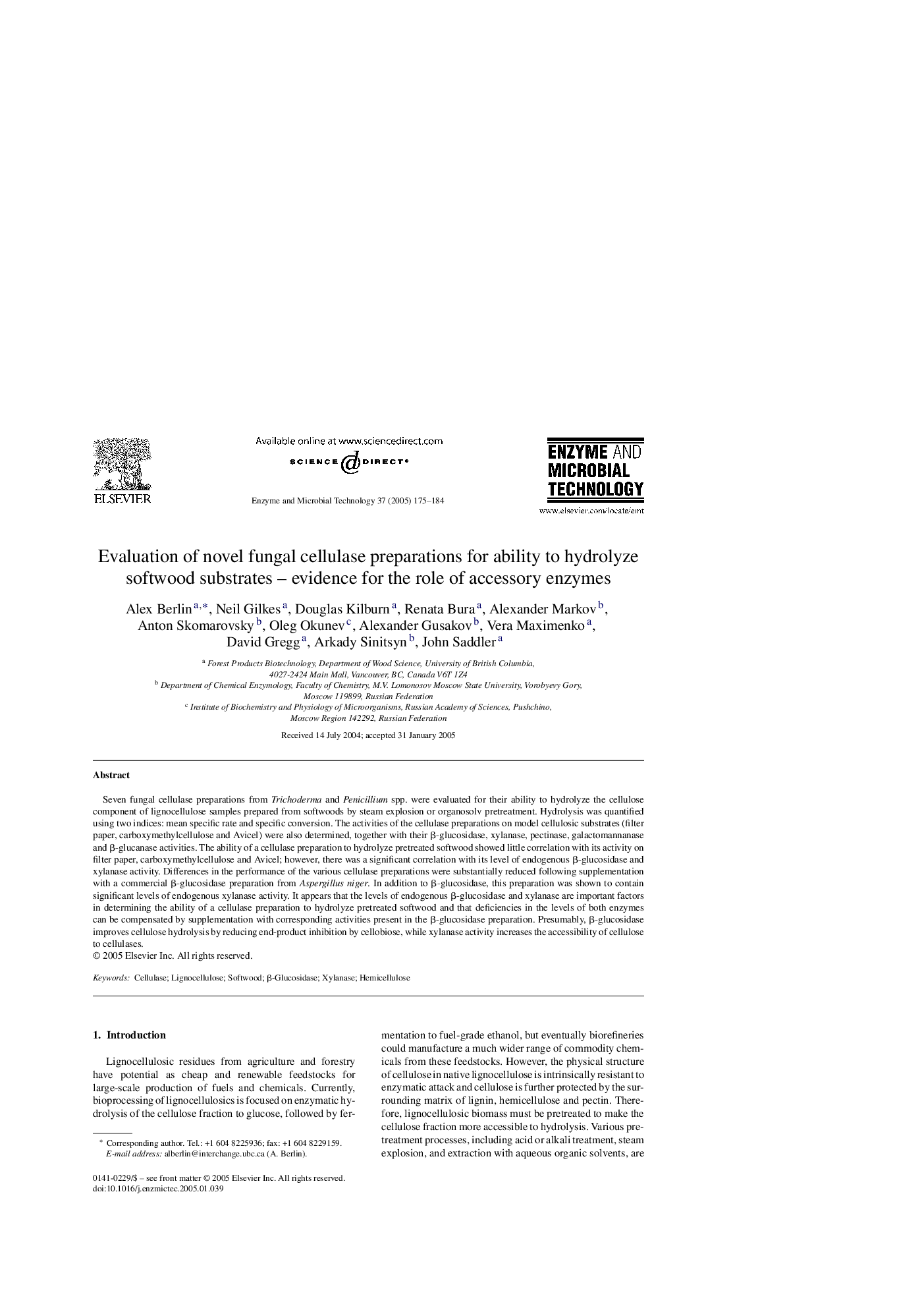| Article ID | Journal | Published Year | Pages | File Type |
|---|---|---|---|---|
| 10233417 | Enzyme and Microbial Technology | 2005 | 10 Pages |
Abstract
Seven fungal cellulase preparations from Trichoderma and Penicillium spp. were evaluated for their ability to hydrolyze the cellulose component of lignocellulose samples prepared from softwoods by steam explosion or organosolv pretreatment. Hydrolysis was quantified using two indices: mean specific rate and specific conversion. The activities of the cellulase preparations on model cellulosic substrates (filter paper, carboxymethylcellulose and Avicel) were also determined, together with their β-glucosidase, xylanase, pectinase, galactomannanase and β-glucanase activities. The ability of a cellulase preparation to hydrolyze pretreated softwood showed little correlation with its activity on filter paper, carboxymethylcellulose and Avicel; however, there was a significant correlation with its level of endogenous β-glucosidase and xylanase activity. Differences in the performance of the various cellulase preparations were substantially reduced following supplementation with a commercial β-glucosidase preparation from Aspergillus niger. In addition to β-glucosidase, this preparation was shown to contain significant levels of endogenous xylanase activity. It appears that the levels of endogenous β-glucosidase and xylanase are important factors in determining the ability of a cellulase preparation to hydrolyze pretreated softwood and that deficiencies in the levels of both enzymes can be compensated by supplementation with corresponding activities present in the β-glucosidase preparation. Presumably, β-glucosidase improves cellulose hydrolysis by reducing end-product inhibition by cellobiose, while xylanase activity increases the accessibility of cellulose to cellulases.
Related Topics
Physical Sciences and Engineering
Chemical Engineering
Bioengineering
Authors
Alex Berlin, Neil Gilkes, Douglas Kilburn, Renata Bura, Alexander Markov, Anton Skomarovsky, Oleg Okunev, Alexander Gusakov, Vera Maximenko, David Gregg, Arkady Sinitsyn, John Saddler,
